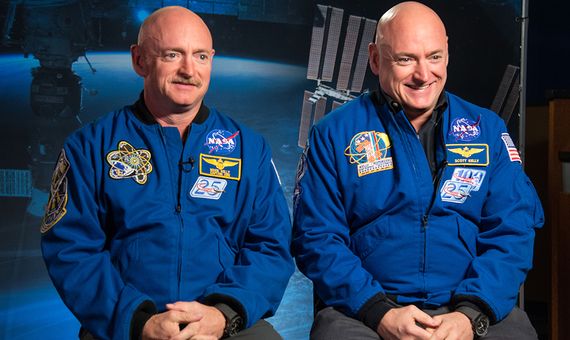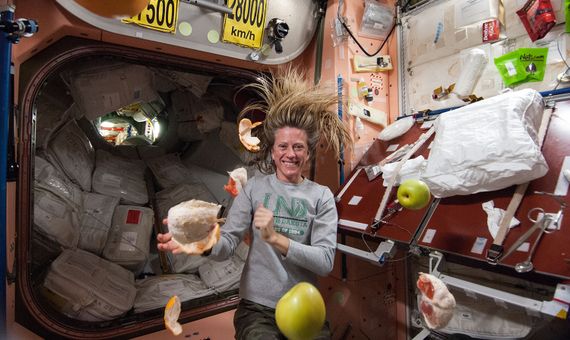Until now, government agencies have held the monopoly on space travel. But with the entry of private industry into the sector, space tourism is about to take off. Orbiting the Earth, the Moon and even Mars will cease to be a dream for a lucky few, who will have to watch their health very closely. Different experiments have shown that radiation, lack of gravity and isolation can all have negative impacts on the body.
“Spaceflight affects most of the body’s systems, but the one of most concern currently is in the eye-retina and the optic nerve, possibly associated with increased intracranial pressure,” says Jeffrey A. Jones, professor at the Baylor School of Medicine (USA), in a conversation with OpenMind.
The risks are different if you travel to the International Space Station (ISS), the Moon or the red planet. Located some 400 kilometres above the Earth, the ISS is a research centre orbiting the Earth, which some tourists have already visited.
To find out how space affects the human body, twin brothers Mark and Scott Kelly participated in NASA’s Twins study. After a one-year mission at the station—twice as long as usual—scientists compared Scott’s physical parameters with those of Mark, who had remained on Earth.

Although most of the biological changes that Scott experienced in space returned to their normal levels, he did retain some anomalies. The most striking one is his DNA. Identical twins share 100% of the genetic information, but space altered that similarity and now Mark and Scott share 93%.
According to scientists, that 7% difference has to do with long-term changes in genes related to the immune system, DNA repair, bone formation networks, hypoxia (deficiency of oxygen in blood) and hypercapnia (increase in carbon dioxide in arterial blood).
Viktor S. Kokhan, a researcher at the Institute of Biomedical Problems of the Russian Academy of Sciences, tells OpenMind that: “I think you can also refer to NASA’s “TWINS study”, the results of which also inspire optimism. However, do not forget that this is an orbital experiment, so it is not full in terms of radiation impact, much more intense in the interplanetary space.”
The harm from radiation
Although the Earth’s magnetic field does protect the ISS, the astronauts who are there receive ten times more radiation than if they were on the surface of the planet. By abandoning this shield, cosmic radiation is unleashed and with it an increased risk of cancer.
To calculate the probability of developing malignant tumours in those who have travelled to space or are going to do so, NASA has developed software that compares the exposure to solar radiation storms and to galactic cosmic rays.

“For a lunar or Mars mission, the risk with the most uncertainty relates to radiation exposure from both GCR—galactic cosmic radiation—and from SPE, solar particle or solar proton events, when the solar system is showered with radiation due to sunspots and associated coronal mass ejections,” explains Jones.
In addition to an increased risk of cancer, exposure to this radiation can also damage the central nervous system, with effects that are noticed years later, such as altered motor and cognitive functions. Degenerative diseases such as cataracts or cardiac and circulatory pathologies could also develop.
Playing the gravity field
Although it may seem fun to live without gravity, floating on a ship or in space, variations in the gravitational fields affect the human body. On a trip to Mars, space travellers will have to face three situations: the six-month journey between the planets, where they will not experience weight; the stay on the surface of Mars, with a third of the terrestrial gravity, and the return to the Earth with its corresponding gravity.
The transition from one gravitational field to another affects orientation, coordination, balance and locomotion. To this is added the problem that the lack of gravity causes bones to lose minerals, with a density loss of more than 1% each month. On Earth, older people lose more or less that percentage of minerals, but every year.

Kokhan reminds us that hypogravity, i.e. the existence of a diminished gravitational field, also affects the functions of the central nervous system. However, according to an experiment conducted on rats, low gravity combined with a type of radiation could level out the negative effects on this nervous system. “These data inspire optimism,” says the scientist.
Isolated in space
The isolation for months on end can also take a toll on mental health. Although astronauts prepare for these conditions, living in a small space often influences mood, personal relationships and the occurrence of sleep disorders. To avoid this, engineers are designing ships with LED lights, which help to balance circadian rhythms and improve sleep.
This isolation is also the perfect environment for the microbes of the body to be transmitted from one person to another. With their immune systems altered, astronauts are at greater risk of suffering from allergies and other diseases.
There are numerous challenges for the human body that scientists are analysing and trying to prevent before taking the great interplanetary leap.
Laura Chaparro
Comments on this publication